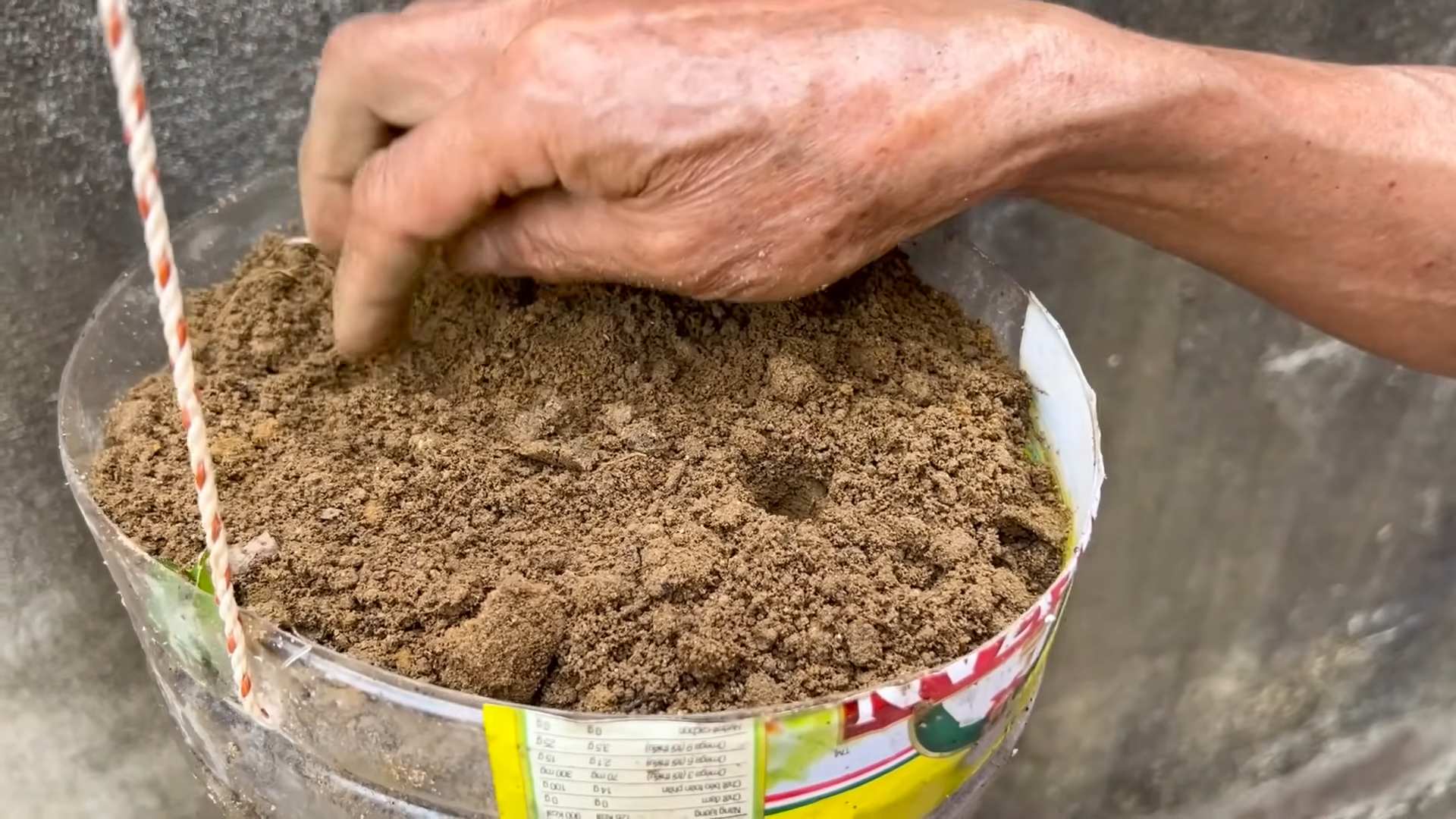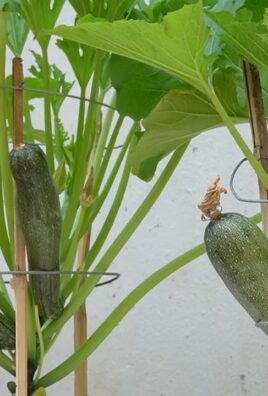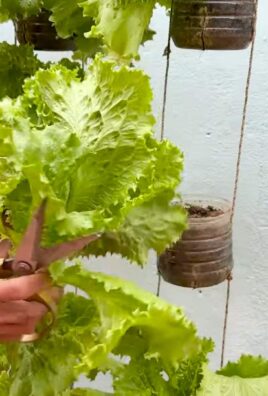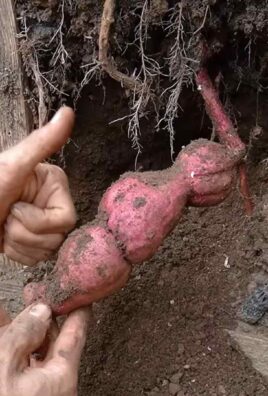Sweeter Melon Growing Tips: Who doesn’t dream of biting into a juicy, perfectly sweet melon grown right in their own backyard? I know I do! There’s something incredibly satisfying about nurturing a plant from seed to harvest, especially when that harvest is a delicious, sun-ripened melon. But let’s be honest, achieving that level of sweetness can sometimes feel like a gardener’s holy grail. That’s where these DIY tricks come in – they’re your secret weapon to unlocking the full potential of your melon patch.
Melons have a rich history, cultivated for centuries across various cultures. From ancient Egypt, where they were depicted in artwork, to Asia, where they hold symbolic meaning, melons have always been prized for their refreshing taste and nutritional value. But even with generations of cultivation, getting that perfect sweetness still requires a little know-how.
Why do you need these sweeter melon growing tips? Because store-bought melons often lack the intense flavor and sweetness we crave. Plus, growing your own allows you to control the entire process, ensuring you’re using organic methods and avoiding harmful chemicals. Imagine the pride you’ll feel serving up slices of your own homegrown, incredibly sweet melon to friends and family! This article is packed with easy-to-follow DIY hacks that will transform your melon growing game, helping you achieve that coveted sweetness and enjoy the fruits (or rather, melons!) of your labor. Let’s get started!

How to Grow the Sweetest Melons You’ve Ever Tasted!
Okay, melon lovers, let’s get real. We all dream of biting into a perfectly ripe, dripping-with-sweetness melon, right? But sometimes, those grocery store melons just don’t cut it. That’s why I’m going to share my secrets for growing melons that are so sweet, they’ll make your taste buds sing! This isn’t just about planting seeds; it’s about understanding what melons need to thrive and maximizing their sugar content. Get ready for some serious melon magic!
Choosing the Right Melon Variety
Before we even think about soil or sunshine, let’s talk varieties. Not all melons are created equal! Some are naturally sweeter than others, and some are better suited to certain climates.
* Cantaloupe: Look for varieties like ‘Athena’, ‘Honeycrisp’, or ‘Sugar Cube’. These are known for their high sugar content and disease resistance.
* Watermelon: ‘Sugar Baby’ is a classic for a reason – it’s small, early, and incredibly sweet. ‘Crimson Sweet’ is another popular choice, offering a good balance of sweetness and size. For something unique, try ‘Yellow Doll’ for a yellow-fleshed watermelon that’s surprisingly sweet.
* Honeydew: ‘Honey Gold’ and ‘Temptation’ are reliable choices for sweet and flavorful honeydews.
Pro Tip: Check your local nurseries and seed catalogs for varieties that are specifically recommended for your region. They’ll be better adapted to your climate and growing conditions.
Preparing the Soil: The Foundation for Sweetness
Melons are heavy feeders, meaning they need a lot of nutrients to produce those sugary fruits. So, preparing the soil is absolutely crucial.
* Sunlight: Melons need at least 6-8 hours of direct sunlight per day. Choose a location that gets plenty of sun throughout the growing season.
* Soil Type: Melons prefer well-drained, sandy loam soil. This type of soil warms up quickly in the spring and allows for good root development.
* Soil pH: Aim for a soil pH between 6.0 and 6.8. You can test your soil pH with a home testing kit or send a sample to your local agricultural extension office.
* Amendments: This is where the magic happens! Before planting, amend your soil with plenty of organic matter, such as compost, well-rotted manure, or leaf mold. This will improve drainage, aeration, and nutrient content. I like to add a generous amount of compost – at least 4-6 inches – and work it into the top 12 inches of soil.
* Fertilizer: Incorporate a slow-release fertilizer that’s high in phosphorus and potassium. These nutrients are essential for fruit development and sweetness. Follow the instructions on the fertilizer package carefully. Bone meal is a great natural source of phosphorus.
Step-by-Step Soil Preparation:
1. Clear the area: Remove any weeds, rocks, or debris from the planting area.
2. Test your soil: Determine the pH and nutrient levels of your soil.
3. Amend the soil: Add compost, manure, or other organic matter to improve soil quality.
4. Incorporate fertilizer: Mix a slow-release fertilizer into the soil according to package directions.
5. Create mounds or rows: Melons grow best on slightly raised mounds or rows. This improves drainage and allows the soil to warm up faster.
Planting Your Melon Seeds or Transplants
Now that your soil is prepped, it’s time to get those melons in the ground! You can either start seeds indoors or direct sow them in the garden.
* Starting Seeds Indoors: This gives you a head start on the growing season, especially in cooler climates. Start seeds 4-6 weeks before the last expected frost. Use peat pots or biodegradable containers to minimize root disturbance when transplanting.
* Direct Sowing: Wait until the soil has warmed up to at least 70°F (21°C) before direct sowing melon seeds. Plant seeds about 1 inch deep and 2-3 feet apart, depending on the variety.
* Transplanting: Harden off your seedlings by gradually exposing them to outdoor conditions for a week before transplanting. Plant them at the same depth they were growing in their containers.
Step-by-Step Planting:
1. Start seeds indoors (optional): Sow seeds in peat pots 4-6 weeks before the last frost.
2. Harden off seedlings (if applicable): Gradually expose seedlings to outdoor conditions for a week.
3. Prepare planting holes: Dig holes that are slightly larger than the root ball of your seedlings or the size of your seed starting pot.
4. Plant seeds or transplants: Place the seeds or seedlings in the holes and gently backfill with soil.
5. Water thoroughly: Water the newly planted melons well to help them establish.
Watering and Feeding: Keeping Your Melons Happy
Consistent watering and feeding are essential for healthy melon growth and sweet fruit production.
* Watering: Melons need consistent moisture, especially during fruit development. Water deeply and regularly, aiming for about 1-2 inches of water per week. Avoid overhead watering, as this can promote fungal diseases. Drip irrigation or soaker hoses are ideal.
* Fertilizing: Side-dress your melon plants with a fertilizer that’s high in potassium when the fruits start to develop. Potassium is crucial for sugar production. I like to use a liquid seaweed fertilizer or a compost tea.
* Mulching: Apply a layer of mulch around your melon plants to help retain moisture, suppress weeds, and regulate soil temperature. Straw, wood chips, or black plastic mulch are all good options.
Step-by-Step Watering and Feeding:
1. Water deeply and regularly: Provide 1-2 inches of water per week, especially during fruit development.
2. Fertilize with potassium: Side-dress plants with a potassium-rich fertilizer when fruits start to develop.
3. Apply mulch: Use straw, wood chips, or black plastic mulch to retain moisture and suppress weeds.
Pruning and Training: Maximizing Sunlight and Airflow
Pruning and training your melon plants can improve airflow, reduce disease, and encourage larger, sweeter fruits.
* Pruning: Remove any suckers (small shoots that grow from the base of the plant) to direct energy to the main vines and fruits. You can also prune some of the lateral vines to improve airflow and sunlight penetration.
* Training: Train your melon vines to grow along a trellis or fence. This will keep the fruits off the ground, improve airflow, and make harvesting easier. For smaller melons like ‘Sugar Baby’, you can even use slings to support the fruits as they grow.
Step-by-Step Pruning and Training:
1. Remove suckers: Pinch off any small shoots growing from the base of the plant.
2. Prune lateral vines (optional): Trim some of the side vines to improve airflow and sunlight.
3. Train vines: Guide the vines to grow along a trellis or fence.
4. Support fruits (optional): Use slings to support smaller melons as they grow.
Pest and Disease Control: Protecting Your Precious Melons
Melons are susceptible to a variety of pests and diseases, so it’s important to be vigilant and take preventative measures.
* Common Pests: Aphids, squash bugs, cucumber beetles, and vine borers can all damage melon plants. Inspect your plants regularly and take action at the first sign of infestation. Insecticidal soap, neem oil, and hand-picking are effective control methods.
* Common Diseases: Powdery mildew, downy mildew, and fusarium wilt are common fungal diseases that can affect melons. Improve airflow, avoid overhead watering, and apply a fungicide if necessary. Choose disease-resistant varieties whenever possible.
* Prevention: Practice crop rotation, remove plant debris, and keep your garden clean to prevent pest and disease problems.
Step-by-Step Pest and Disease Control:
1. Inspect plants regularly: Look for signs of pests or diseases.
2. Take action early: Treat infestations or diseases as soon as they appear.
3. Use appropriate control methods: Insecticidal soap, neem oil, fungicides, and hand-picking are all effective options.
4. Practice prevention: Crop rotation, sanitation, and disease-resistant varieties can help prevent problems.
Harvesting: The Sweet Reward
Knowing when to harvest your melons is crucial for getting that perfect sweetness.
* Cantaloupe: A ripe cantaloupe will have a sweet aroma, a slightly softened blossom end, and a stem that slips easily from the vine.
* Watermelon: A ripe watermelon will have a dull thud when tapped, a yellow spot on the

Conclusion
So, there you have it! Unlocking the secret to intensely sweet melons isn’t about expensive fertilizers or complicated gardening techniques. It’s about understanding the plant’s needs and employing a few simple, yet effective, DIY tricks. From strategically pruning those thirsty vines to carefully controlling watering schedules, each step contributes to concentrating the sugars within the fruit, resulting in a flavor explosion that will redefine your melon-eating experience.
This isn’t just about growing melons; it’s about elevating the entire process. Imagine biting into a homegrown cantaloupe so sweet it rivals candy, or a watermelon so juicy and flavorful it makes store-bought versions seem bland in comparison. This is the power of understanding and applying these DIY techniques.
Why is this a must-try? Because it empowers you to take control of the flavor of your food. You’re not relying on luck or the unpredictable conditions of commercial farming. You’re actively shaping the outcome, ensuring a consistently delicious harvest. Plus, there’s an immense satisfaction in knowing you nurtured something so delicious from seed to table.
But don’t stop there! Experiment with variations to find what works best for your specific climate and melon variety. Try different types of organic fertilizers, or adjust the pruning schedule based on your plant’s growth. Consider using reflective mulch to increase sunlight exposure and further enhance sweetness. You could even try grafting your melon plants onto more vigorous rootstock for improved nutrient uptake. The possibilities are endless!
We encourage you to embrace these sweeter melon growing tips and embark on your own melon-growing adventure. Don’t be afraid to experiment, learn from your mistakes, and most importantly, have fun! The reward of biting into a perfectly sweet, homegrown melon is well worth the effort.
Now, we want to hear from you! Have you tried any of these techniques? What were your results? Do you have any other secret tips for growing sweeter melons? Share your experiences, successes, and failures in the comments below. Let’s create a community of melon enthusiasts, sharing knowledge and helping each other grow the sweetest melons imaginable. Your insights could be invaluable to other gardeners, and together, we can all unlock the full potential of our melon patches. So, get growing, get sharing, and get ready to taste the sweetest melons of your life!
Frequently Asked Questions (FAQ)
Q: What is the most important factor in growing sweeter melons?
A: While several factors contribute, controlling watering is arguably the most crucial. Reducing watering as the melon nears maturity concentrates the sugars, leading to a sweeter taste. However, it’s a delicate balance; you don’t want to stress the plant to the point of wilting or cracking the fruit. Monitor your plants closely and adjust watering accordingly.
Q: How do I know when to reduce watering?
A: A good indicator is when the melon is nearing its full size and the vine closest to the fruit starts to dry out. Also, check the tendril closest to the fruit; when it starts to turn brown and dry, it’s a sign that the melon is almost ripe and ready for reduced watering. Remember to observe your plants carefully, as these are just general guidelines.
Q: What kind of fertilizer should I use for melons?
A: Melons benefit from a balanced fertilizer early in their growth, with a higher nitrogen content to promote leafy growth. Once the flowers appear, switch to a fertilizer with a higher phosphorus and potassium content to encourage fruit development and sweetness. Organic options like compost tea, bone meal, and wood ash are excellent choices. Avoid over-fertilizing, as this can lead to excessive vine growth at the expense of fruit production.
Q: How much pruning is necessary for melon plants?
A: Pruning is essential for directing the plant’s energy towards fruit production. Remove any suckers (small shoots growing from the base of the plant) and non-fruiting vines. You can also prune some of the leaves around the developing melons to improve sunlight exposure. However, avoid excessive pruning, as the leaves are necessary for photosynthesis and providing energy to the plant.
Q: Can I use these techniques for all types of melons?
A: Yes, these techniques can be applied to most types of melons, including watermelons, cantaloupes, honeydews, and muskmelons. However, the specific watering and pruning schedules may need to be adjusted based on the variety. Research the specific needs of your chosen melon variety for optimal results.
Q: What if my melons are still not sweet after trying these tips?
A: Several factors can affect melon sweetness, including soil quality, sunlight exposure, and weather conditions. Ensure your soil is well-draining and rich in organic matter. Melons need at least 6-8 hours of direct sunlight per day. Unusually cool or cloudy weather can also impact sweetness. Consider using row covers to protect your plants from adverse weather conditions. Also, make sure you are harvesting the melons at the peak of ripeness.
Q: How do I know when my melon is ripe?
A: Ripeness indicators vary depending on the melon variety. For watermelons, look for a dull rind, a yellow or cream-colored spot on the underside where it rested on the ground, and a hollow sound when thumped. For cantaloupes, the stem should slip easily from the vine when ripe. Honeydews should have a slightly waxy feel and a sweet aroma. Research the specific ripeness indicators for your chosen melon variety.
Q: Can I grow sweeter melons in containers?
A: Yes, you can grow melons in containers, but you’ll need a large container (at least 20 gallons) and a strong trellis for support. Choose a compact or bush variety of melon that is well-suited for container gardening. Ensure the container has good drainage and use a high-quality potting mix. Water and fertilize regularly, as container-grown plants tend to dry out and deplete nutrients more quickly.
Q: What are some common pests and diseases that affect melon plants?
A: Common pests include aphids, squash bugs, and vine borers. Common diseases include powdery mildew and fusarium wilt. Regularly inspect your plants for signs of pests or diseases and take appropriate action. Organic pest control methods, such as insecticidal soap and neem oil, can be effective. Choose disease-resistant varieties and practice crop rotation to prevent soilborne diseases.
Q: How can I improve the soil for growing melons?
A: Melons prefer well-draining soil that is rich in organic matter. Amend your soil with compost, aged manure, or other organic materials before planting. A soil test can help you determine the pH and nutrient levels of your soil and identify any deficiencies that need to be addressed. Melons prefer a slightly acidic to neutral soil pH (6.0-7.0).





Leave a Comment